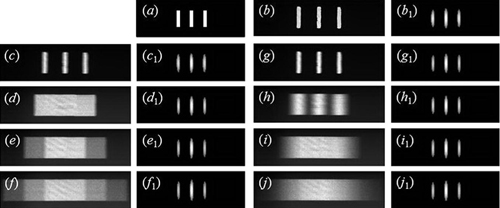For conventional imaging, shaking of the imaging system or the target leads to the degradation of imaging resolution. Researchers at Shanghai Institute of Optics and Fines Mechanics (SIOM/China)——Key Laboratory for Quantum Optics and Center for Cold Atom Physics have investigated the influence of the target’s shaking to Fourier-transform ghost diffraction (FGD) and recovered the target’s imaging with the phase-retrieval method .[ Applied Physics Letters 102, 021111 (2013)]
They have given a proposal to improve the imaging resolution of shaking object using ghost imaging technique. When the object’s shaking amplitude is smaller than the source’s illumination area on the object plane and the single pointlike detector in the test path can receive the intensity form the shaking object, both analytical and experimental results have shown that FGD with thermal light is insensitive to the object’s shaking and the object’s imaging with high spatial resolution can be always reconstructed from the FGD patterns. This technique has a great application in practice to overcome motion blur.

FIG. 4. The object’s imaging obtained using a conventional imaging system in different shaking conditions and retrieved from FGD patterns based on the experimental results of Fig. 3. (a) The original object used in numerical simulation and experiments;(b) the object’s imaging obtained using a conventional imaging system in the static case; (b1) phase-retrieval image of static object FGD; (c)–(f)and (c1)–(f1) are conventional imaging results and phase-retrieval results of FGD in the shaking conditions of Figs. 3(a)–3(d), respectively; similarly, (g)–(j) and (g1)–(j1) are conventional imaging results and phase-retrieval results of FGD in the shaking conditions of Figs. 3(e)–3(h), respectively.